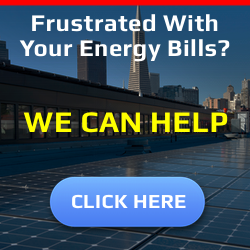A lab buried deep beneath South Dakota could help unlock a clean energy source so reliable it could power over 65 million homes and businesses, reported Renewable Energy Magazine. And thanks to a breakthrough U.S. Department of Energy project, this kind of energy might be closer than you think.
The Center for Understanding Subsurface Signals and Permeability, located at the Sanford Underground Research Facility, is a multi-institutional collaboration led by Pacific Northwest National Laboratory. Its mission is to make enhanced geothermal systems viable nearly anywhere on Earth.
Here’s how it works: An enhanced geothermal system, or EGS, injects water deep underground to be heated by the natural geothermal heat of the Earth. Then, it returns to the surface as hot water or steam to power turbines that generate electricity. It’s a genius way to tap into the Earth’s natural heat to create clean, nearly limitless energy.
Advertisement
Advertisement
But there’s a catch. These engineered underground reservoirs can clog over time as minerals accumulate, similar to how old household pipes get blocked up.
“The big unknown is how long these reservoirs will last,” said Kevin Rosso, director of CUSSP. “We are seeing successful EGS pilot projects all around the world right now that prove this technology works. But we don’t know if these underground reservoirs will continue to produce heat effectively at the same rates for decades.”
That’s where CUSSP comes in. Researchers are studying how underground systems behave in real time, using advanced sensors to track water chemistry, pressure, temperature, and more at SURF’s geothermal test bed.
Watch now: How bad is a gas stove for your home’s indoor air quality?
“That’s one of the exciting things about this location. Here we have control over water temperature, water chemistry, and we know the rock types, and that’s something that’s never been done before,” Rosso said. That precision lets scientists better understand problems and build better models for geothermal plants.
Advertisement
Advertisement
Geothermal energy could be a key part of a cleaner, healthier future for all by stabilizing grids and slashing the pollution overheating our planet. Not only will it make energy more reliable and affordable, but reduced air pollution is a move toward safeguarding public health.
The use of EGS has already caught the attention of tech giants such as Google, which recently partnered with Project Innerspace and SLB to advance the adoption of geothermal energy. But CUSSP is taking it further by solving long-term challenges, making sure EGS can stay efficient, affordable, and scalable.
Beyond science, this work supports a clean energy workforce. With over 40 researchers and students involved, CUSSP is joining geochemists, engineers, and data scientists to help lead the transition away from dirty energy.
“It’s really exciting to see multiple disciplines coming together, rallying around a really focused problem,” said Rosso.
Advertisement
Advertisement
One way homeowners can take advantage of the clean energy shift is to install solar panels, which can bring energy bills down to $0. EnergySage makes it easy to compare quotes from local installers, and you can save up to $10,000 on installation.
For anyone who can’t install panels, growing community solar options allow you to get in on the savings.
Join our free newsletter for weekly updates on the latest innovations improving our lives and shaping our future, and don’t miss this cool list of easy ways to help yourself while helping the planet.






